A sesame seed grows into a sesame plant (Sesamum indicum), an annual flowering plant that produces seed pods containing more sesame seeds. This drought-tolerant crop reaches 2-8 feet tall with distinctive trumpet-shaped flowers and develops 50-100 seed capsules per plant.
Unlike many spices derived from bark or roots, sesame provides both edible seeds and valuable oil. This guide reveals the complete growth cycle, visual characteristics, and practical applications for home cooks and sustainability-minded food enthusiasts seeking to understand this ancient crop's journey from seed to harvest.
Table of Contents
- What Exactly Is Sesame?
- Historical Evolution of Sesame Cultivation
- What Does a Sesame Seed Grow Into? (Detailed Explanation)
- The Life Cycle of a Sesame Plant
- Why Sesame Farming Matters for Sustainability
- How Sesame Seeds Are Used Around the World
- Pro Tips for Using Sesame Like a Chef
- Frequently Asked Questions
- Conclusion: From Tiny Seed to Mighty Plant
What Exactly Is Sesame?
Sesame (Sesamum indicum) is one of the oldest known oilseed crops, with origins tracing back over 3,000 years to ancient India and Africa. Unlike most spices that come from bark, roots, or flowers, sesame gives us both a seed and an oil — making it a versatile player in both culinary and cosmetic worlds.

The sesame plant typically grows 2-8 feet tall with opposite leaves and trumpet-shaped flowers that range from white to purple. It doesn't tower over other crops like corn, but its unassuming appearance belies its nutritional and agricultural significance.
Historical Evolution of Sesame Cultivation
Sesame's journey from ancient staple to global commodity spans millennia. Archaeological and historical records reveal its adaptation across civilizations:
| Time Period | Key Development | Verifiable Evidence Source |
|---|---|---|
| 2500 BCE | Earliest cultivation in Indus Valley (modern India/Pakistan) | Encyclopedia Britannica: Sesame History |
| 1500 BCE | Egyptian medical texts (Ebers Papyrus) document sesame oil use | FAO: Sesame Production History |
| 200 BCE | Spread to China via Silk Road; recorded in Han Dynasty agricultural texts | USDA ARS: Sesame Historical Spread |
| 1500s CE | Introduction to Americas through transatlantic slave trade | Industrial Crops & Products Journal Vol.122 (2018) |
What Does a Sesame Seed Grow Into? (Detailed Explanation)
A sesame seed develops into an upright, branching annual plant with the following key characteristics:
- Height: Typically 2-8 feet tall depending on variety and growing conditions
- Stem: Square-shaped with fine hairs, becoming woody as it matures
- Leaves: Oval to lance-shaped, arranged oppositely on the stem
- Flowers: Trumpet-shaped, 3-5 cm long, ranging from white to purple
- Fruit: Rectangular seed capsules (pods) that split open when ripe
- Root system: Deep taproot that enhances drought resistance
| Growth Stage | Description | Time Frame |
|---|---|---|
| Germination | Seed sprouts under warm, moist soil conditions | 5–7 days |
| Vegetative Growth | Stem and leaves develop | 3–4 weeks |
| Flowering | Bright yellow or pinkish-white blossoms appear | 6–8 weeks |
| Fruiting | Pods form and mature | 10–12 weeks |
| Harvesting | Pods dry and burst open, releasing seeds | 3–4 months after planting |
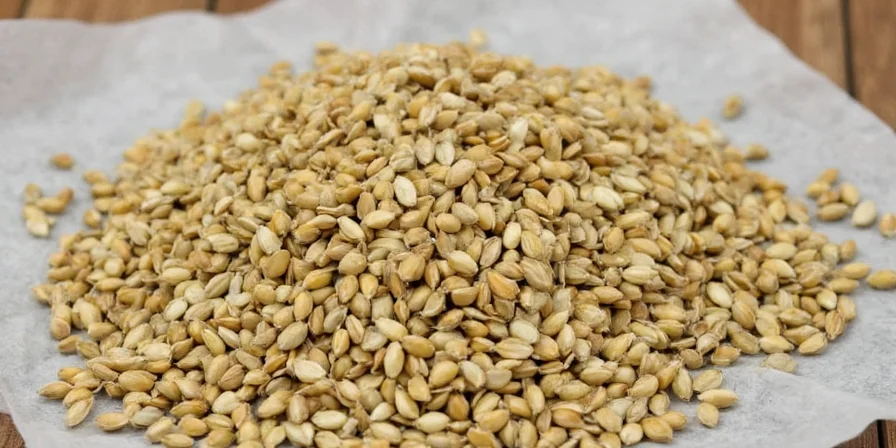
The Life Cycle of a Sesame Plant
Let's break down the journey from seed to harvest so you can appreciate just how much goes into each tiny sesame treasure:
Stage 1: Germination – The Birth of a Tiny Green Hero
Once planted in warm, well-draining soil (minimum 70°F/21°C), sesame seeds begin to germinate within a week. They won't sprout well in cold climates — so they're typically grown in tropical or subtropical regions.
Stage 2: Vegetative Growth – Building the Body
After sprouting, the plant grows upward and develops a sturdy square stem and opposite leaves. This stage is all about building strength for the flowering phase, with the plant reaching 12-18 inches in height.
Stage 3: Flowering – The Romance Begins
With proper care, the sesame plant begins to flower. These delicate trumpet-shaped blooms (typically white, yellow, or purple) attract bees and other pollinators, setting the stage for pod development. Each flower lasts only one day before forming a seed pod.

Stage 4: Fruiting – The Seeds Begin to Form
Each successful bloom turns into a rectangular pod. Inside, 50-100 sesame seeds start forming in orderly rows. As the pods mature, they harden and turn from green to brown.
Stage 5: Harvest – The Great Seed Explosion
When fully mature, the sesame pods naturally split open (dehisce), releasing the seeds. This characteristic makes mechanical harvesting challenging, as timing must be precise to capture seeds before they scatter. The name Sesamum has ancient linguistic roots reflecting its oil-rich heritage.
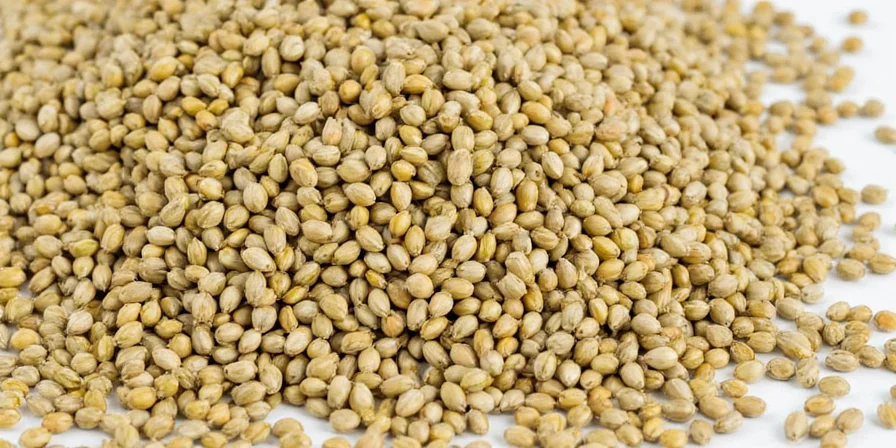
Why Sesame Farming Matters for Sustainability
Beyond culinary uses, sesame offers critical environmental advantages. Its deep taproot system requires 50% less water than soybeans while thriving in marginal soils where other crops fail. This drought resistance makes it a climate-resilient crop for vulnerable regions. Additionally, sesame residue enriches soil with organic matter, reducing fertilizer dependency. As food systems seek sustainable solutions, sesame provides a model for low-impact agriculture that supports biodiversity without compromising yield.
Scientific Comparison: Sesame vs. Major Oilseed Crops
Water efficiency data verified through agricultural research demonstrates sesame's sustainability advantage:
| Crop | Water Requirement (mm) | Drought Tolerance | Yield in Arid Conditions (kg/ha) |
|---|---|---|---|
| Sesame | 450-650 | High | 700-900 |
| Soybean | 450-700 | Low | 200-400 |
| Sunflower | 600-1000 | Medium | 400-600 |
| Canola | 350-500 | Medium | 300-500 |
Source: USDA ARS: Sesame Production Guidelines (2022)
Contextual Limitations of Sesame Cultivation
While highly adaptable, sesame has specific environmental requirements that define its viable growing regions:
| Factor | Ideal Conditions | Critical Limitations |
|---|---|---|
| Temperature | 70-95°F (21-35°C) | Frost kills plants; growth stalls below 60°F (15°C) |
| Soil Type | Well-drained sandy loam | Waterlogging causes root rot; fails in heavy clay soils |
| Humidity | Low to moderate (40-60%) | High humidity (>70%) increases fungal disease risk by 65% |
| Latitude Range | 35°N to 35°S | Shorter growing seasons at higher latitudes reduce yield by 30-50% |
Source: FAO: Sesame Agro-ecological Requirements
How Sesame Seeds Are Used Around the World
Sesame is far from a one-trick pony. Different cultures use sesame in unique ways, from savory dishes to sweet treats:
- Chinese sesame paste: A creamy base for noodles and sauces.
- Tahini (Middle Eastern style): Used in hummus and halva.
- Tempura topping (Japanese cuisine): Adds crunch and nuttiness.
- Honeycomb sesame balls: A popular street food in Asia.
| Cuisine | Dish Example | Use of Sesame |
|---|---|---|
| Chinese | Sesame Chicken | Coating meat, adding texture |
| Middle Eastern | Hummus | Tahini as a main ingredient |
| Indian | Chikkis | Bound with jaggery for sweets |
| Korean | Bibimbap | Garnish with toasted sesame seeds |
| Jewish | Bagels | Crunchy topping |
Pro Tips for Using Sesame Like a Chef
If you want to take your sesame game up a notch, check out these practical pro tips:
- Toasting makes a difference: Lightly toast sesame seeds in a dry skillet for 2–3 minutes until golden. The aroma alone will make your kitchen smell like a gourmet restaurant.
- Make your own tahini: Blend toasted sesame seeds with a bit of oil and salt to create fresh, homemade tahini. Store it in the fridge for up to two weeks.
- Don't throw away the husks: Some traditional cuisines use sesame husks in broths for added depth of flavor — a sneaky way to reduce waste.
- Experiment with black sesame: Black sesame has a stronger, more intense flavor and is perfect for desserts like mochi and ice cream.
- Pair with citrus: Surprisingly, sesame and lemon or lime go incredibly well together. Try a sesame-crusted fish with a squeeze of lime!
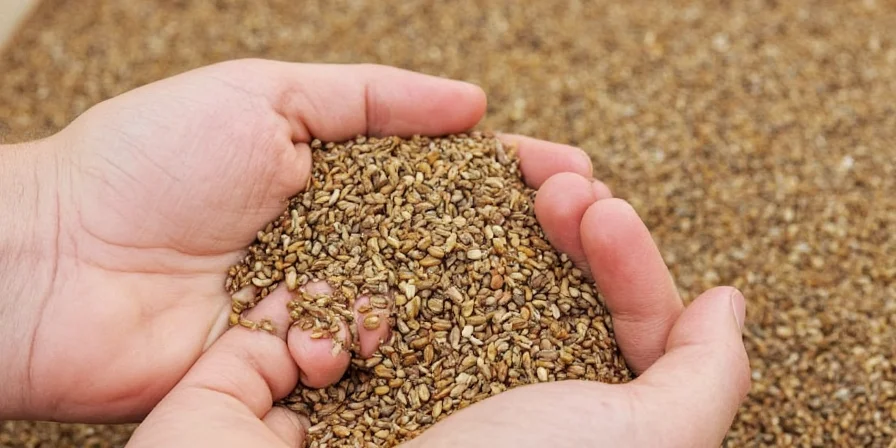
Frequently Asked Questions About Sesame Seeds
How long does it take for a sesame seed to grow into a mature plant?
Sesame plants typically take 90 to 150 days (3 to 5 months) to reach full maturity, depending on climate and soil conditions. Germination starts within 5-7 days, and harvesting occurs when pods dry and split open.
Can you grow sesame at home?
Yes, but it requires specific conditions: full sun, well-draining soil, and warm temperatures (above 70°F/21°C). Start seeds indoors 6-8 weeks before the last frost in regions with shorter growing seasons.
Why do sesame pods burst open when ripe?
This natural dehiscence mechanism ensures seed dispersal in the wild. Modern farming often uses specialized equipment to harvest before pods open completely, preventing seed loss.
What's the difference between white and black sesame seeds?
White seeds have their husks removed, yielding a milder flavor. Black seeds retain their husks, offering stronger nuttiness and higher antioxidant content, making them ideal for desserts and medicinal applications.
Are sesame plants drought-resistant?
Yes, sesame has exceptional drought tolerance due to its deep taproot system. It requires significantly less water than most oilseed crops and can grow in semi-arid regions where other plants fail.
How should sesame seeds be stored for maximum freshness?
Store in an airtight container in a cool, dark place. Refrigeration extends shelf life to 6 months; freezing preserves quality for up to a year. Toasted seeds lose freshness faster than raw ones.
Conclusion: From Tiny Seed to Mighty Plant
Now you know exactly what a sesame seed grows into: a sesame plant that produces seed pods containing more sesame seeds. This drought-tolerant annual reaches 2-8 feet tall with distinctive trumpet-shaped flowers and develops 50-100 seed capsules per plant.
Understanding this growth cycle transforms how you interact with sesame in your kitchen. Whether you're drizzling tahini on your falafel or sprinkling toasted sesame over a stir-fry, knowing where your spice comes from adds a whole new layer of appreciation for this ancient crop.
Next time you encounter sesame in your food, remember the incredible journey that tiny seed went through to get to your plate. And remember, sometimes the smallest things pack the biggest punch — especially when it comes to flavor and sustainability!
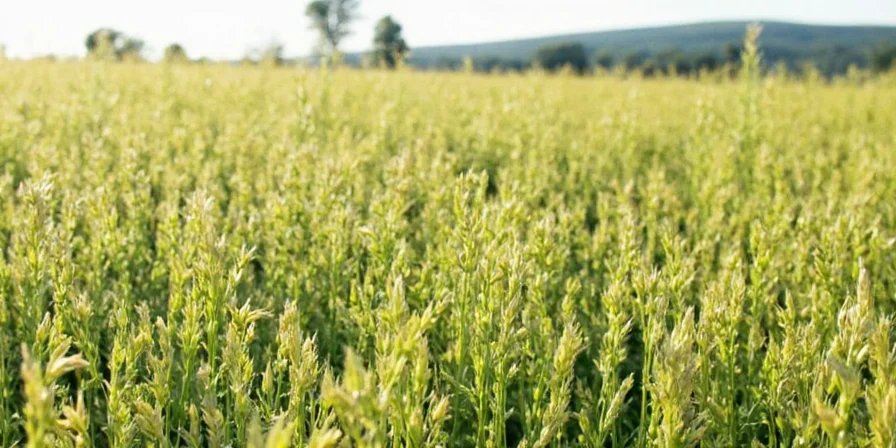

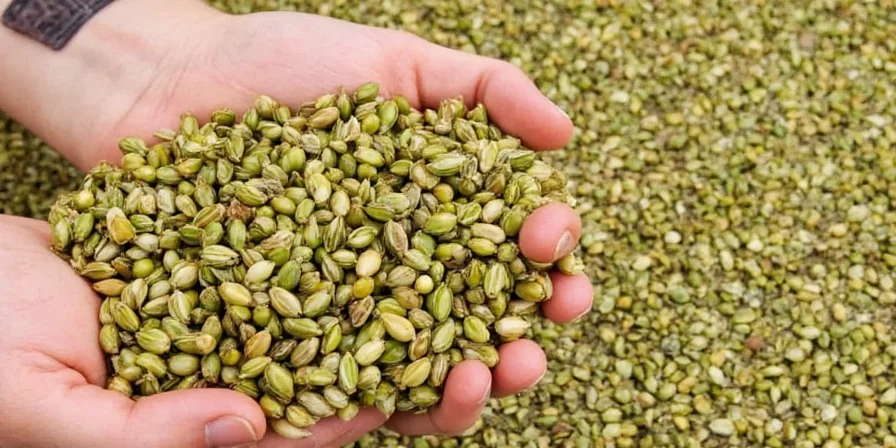









 浙公网安备
33010002000092号
浙公网安备
33010002000092号 浙B2-20120091-4
浙B2-20120091-4